#camille chevillard
Text

october 15, 1905
Claude Debussy's symphonic suite "La Mer" is premiered by the Lamoureux Orchestra under the baton of Camille Chevillard in Paris. The piece was initially not well received, but soon became one of the French composer's most admired and frequently performed orchestral works.
16 notes
·
View notes
Text
Yearly Reading Wrap Up: 2020

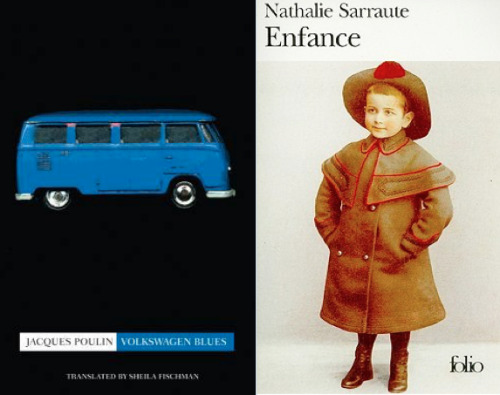
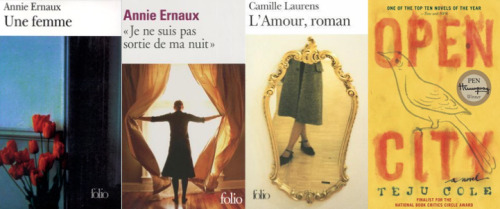
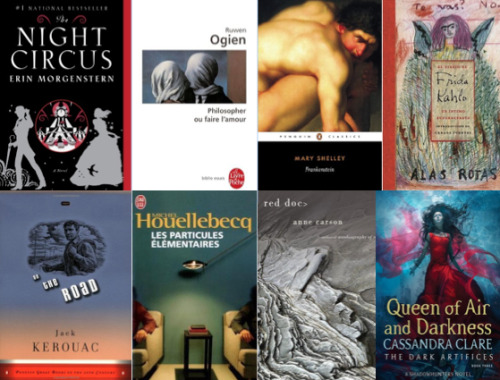
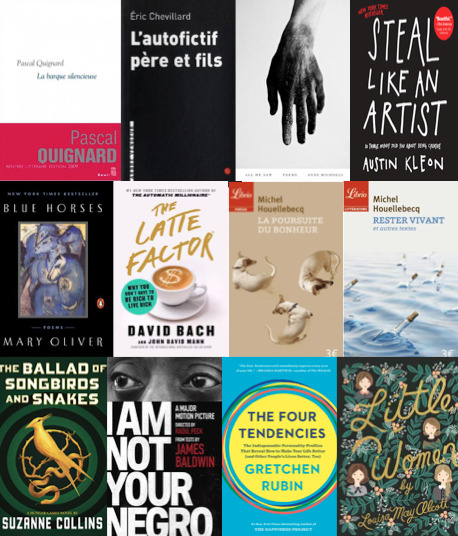

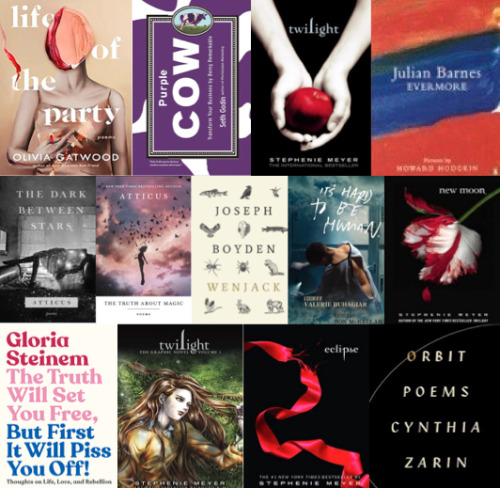





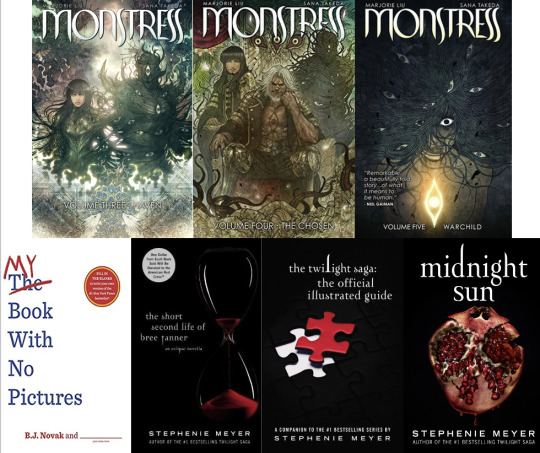
1. La Description Du Monde by Marco Polo ⭐⭐
2. Du côté de chez Swann (À la recherche du temps perdu #1) by Marcel Proust ⭐⭐⭐
3. Discours Du Récit by Gérard Genette ⭐⭐⭐
4. The Private Life of the Diary by Sally Bayley ⭐⭐⭐⭐
5. Anna Karenina by Leo Tolstoy ⭐⭐⭐⭐⭐
6. Let it Snow by John Green ⭐⭐⭐⭐
7. The Loneliness of the Long-Distance Runner by Alan Sillitoe ⭐⭐⭐⭐
8. Roland Barthes by Roland Barthes by Roland Barthes ⭐⭐⭐⭐
9. L'ignorance by Milan Kundera ⭐⭐⭐⭐
10. Mary Ventura and the Ninth Kingdom: A Story by Sylvia Plath ⭐⭐⭐⭐
11. Volkswagen Blues by Jacques Poulin ⭐⭐⭐⭐⭐
12. Enfance by Nathalie Sarraute ⭐⭐⭐⭐
13. Une femme by Annie Ernaux ⭐⭐⭐⭐
14. Je ne suis pas sortie de ma nuit by Annie Ernaux ⭐⭐⭐⭐
15. L’Amour, roman by Camille Laurens ⭐⭐⭐⭐⭐
16. Open City by Teju Cole ⭐⭐⭐⭐
17. The Night Circus by Erin Morgenstern ⭐⭐⭐⭐
18. Philosopher ou faire l'amour by Ruwen Ogien ⭐⭐⭐⭐⭐
19. Frankenstein by Mary Wollstonecraft Shelley ⭐⭐⭐⭐
20. The Diary of Frida Kahlo: An Intimate Self-Portrait by Frida Kahlo ⭐⭐⭐
21. On the Road by Jack Kerouac ⭐⭐
22. Les particules élémentaires by Michel Houellebecq ⭐⭐⭐⭐⭐
23. Red Doc> (Red #2) by Anne Carson ⭐⭐⭐⭐
24. Queen of Air and Darkness (The Dark Artifices #3) by Cassandra Clare ⭐⭐⭐⭐⭐
25. La Barque silencieuse by Pascal Quignard ⭐⭐⭐
26. L'autofictif père et fils by Éric Chevillard ⭐⭐⭐
27. All We Saw: Poems by Anne Michaels ⭐⭐⭐⭐⭐
28. Steal Like an Artist by Austin Kleon ⭐⭐⭐⭐
29. Blue Horses: Poems by Mary Oliver ⭐⭐⭐⭐
30. The Latte Factor by David Bach ⭐⭐⭐⭐
31. La Poursuite du bonheur by Michel Houellebecq ⭐⭐⭐⭐
32. Rester vivant: et autres textes by Michel Houellebecq ⭐⭐⭐
33. The Ballad of Songbirds and Snakes (The Hunger Games #0) by Suzanne Collins ⭐⭐⭐⭐⭐
34. I Am Not Your Negro by James Baldwin ⭐⭐⭐⭐⭐
35. The Four Tendencies by Gretchen Rubin ⭐⭐⭐
36. Little Women by Louisa May Alcott ⭐⭐⭐⭐⭐
37. Wanderlust: A History of Walking by Rebecca Solnit ⭐⭐⭐⭐
38. The Red Scrolls of Magic (The Eldest Curses #1) by Cassandra Clare ⭐⭐⭐⭐
39. Ghosts of the Shadow Market by Cassandra Clare ⭐⭐⭐⭐
40. Borderline Personality Disorder Demystified by Robert O. Friedel ⭐⭐⭐⭐
41. I Will Teach You to Be Rich by Ramit Sethi ⭐⭐⭐⭐
42. Wild Is the Wind by Carl Phillips ⭐⭐⭐⭐
43. Unshakeable by Anthony Robbins ⭐⭐⭐⭐
44. Stray by Stephanie Danler ⭐⭐⭐⭐⭐
45. Rich Dad, Poor Dad by Robert T. Kiyosaki ⭐⭐⭐⭐
46. Dear Ijeawele, or A Feminist Manifesto in Fifteen Suggestions by Chimamanda Ngozi Adichie ⭐⭐⭐⭐⭐
47. She Came to Slay by Erica Armstrong Dunbar ⭐⭐⭐⭐⭐
48. The 7 Habits of Highly Effective People by Stephen R. Covey ⭐⭐⭐⭐
49. Life of the Party by Olivia Gatwood ⭐⭐⭐⭐
50. Purple Cow: Transform Your Business by Being Remarkable by Seth Godin ⭐⭐⭐⭐
51. Twilight (The Twilight Sage #1) by Stephanie Meyer ⭐⭐⭐⭐⭐
52. Evermore by Julian Barnes ⭐⭐⭐
53. The Dark Between Stars by Atticus Poetry ⭐
54. The Truth About Magic by Atticus Poetry ⭐
55. Wenjack by Joseph Boyden ⭐⭐
56. It’s Hard to Be Human by Valerie Buhagiar ⭐⭐⭐⭐
57. New Moon (The Twilight Saga #2) by Stephenie Meyer ⭐⭐⭐⭐⭐
58. The Truth Will Set You Free, But First It Will Piss You Off! by Gloria Steinem ⭐⭐⭐⭐
59. Twilight: The Graphic Novel, Vol. 1 by Young Kim ⭐⭐⭐⭐
60. Eclipse (The Twilight Saga #3) by Stephenie Meyer ⭐⭐⭐⭐
61. Orbit: Poems by Cynthia Zarin ⭐⭐⭐
62. The Power of Now by Eckhart Tolle ⭐⭐⭐⭐
63. The Poet X by Elizabeth Acevedo ⭐⭐⭐⭐⭐
64. A Very Large Expanse of Sea by Tahereh Mafi ⭐⭐⭐⭐
65. Breaking Dawn (The Twilight Saga #4) by Stephenie Meyer ⭐⭐⭐⭐⭐
66. Your Money or Your Life by Vicki Robin ⭐⭐
67. In Conclusion, Don’t Worry About It by Lauren Graham ⭐
68. My Ideal Bookshelf by Thessaly La Force ⭐⭐⭐⭐⭐
69. Things We Lost in the Fire by Mariana Enríquez ⭐⭐⭐⭐⭐
70. Saga Vol. 9 by Brian K. Vaughan ⭐⭐⭐⭐⭐
71. I’m Thinking of Ending Things by Iain Reid ⭐⭐⭐⭐⭐
72. #GIRLBOSS by Sophia Amoruso ⭐⭐⭐⭐
73. Outliers: The Story of Success by Malcolm Gladwell ⭐⭐⭐⭐
74. Violet Bent Backwards Over the Grass by Lana Del Rey ⭐⭐⭐⭐⭐
75. The Sun Is Also a Star by Nicola Yoon ⭐⭐⭐
76. The Secret History by Donna Tartt ⭐⭐⭐⭐⭐
77. She Must Be Mad by Charly Cox ⭐⭐⭐
78. home body by Rupi Kaur ⭐⭐⭐⭐⭐
79. Wind in a Box by Terrance Hayes ⭐⭐⭐
80. No One Is Too Small to Make a Difference by Greta Thunberg ⭐⭐⭐⭐
81. Howl and Other Poems by Allen Ginsberg ⭐⭐⭐⭐⭐
82. Normal People by Sally Rooney ⭐⭐⭐⭐⭐⭐
83. Almost Midnight: Two Festive Short Stories by Rainbow Rowell ⭐⭐⭐
84. A Christmas Carol by Charles Dickens ⭐⭐⭐
85. Holidays on Ice by David Sedaris ⭐⭐
86. Monstress, Vol. 3: Haven (Monstress #3) by Marjorie M. Liu ⭐⭐⭐⭐
87. Monstress, Vol. 4: The Chosen (Monstress #4) by Marjorie M. Liu ⭐⭐⭐
88. Monstress, Vol. 5: Warchild (Monstress #5) by Marjorie M. Liu ⭐⭐⭐
89. My Book With No Pictures by B.J. Novak ⭐⭐⭐⭐⭐
90. The Short Second Life of Bree Tanner (The Twilight Saga #3.5) by Stephenie Meyer ⭐⭐⭐⭐
91. The Twilight Saga: The Official Illustrated Guide by Stephenie Meyer ⭐⭐⭐⭐
92. Midnight Sun (The Twilight Saga #5) by Stephenie Meyer ⭐⭐⭐⭐
#yearly reading wrap up#2020#2020 books#goodreads#star raitings#books#fiction#literature#French books#French literature#English literature#classics#the twilight saga#graphic novels#reading list#reading wrap up
11 notes
·
View notes
Photo
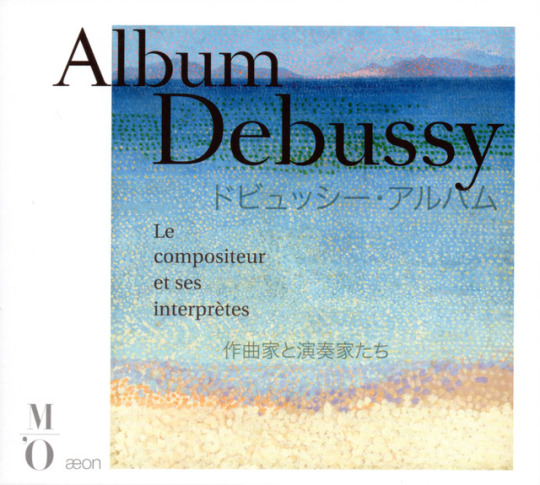
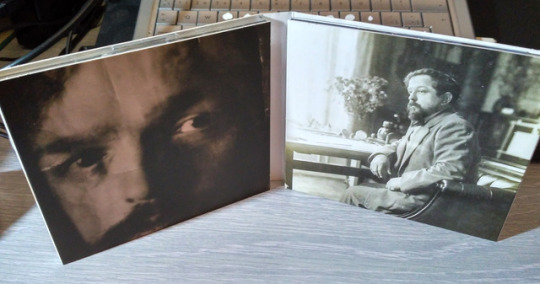
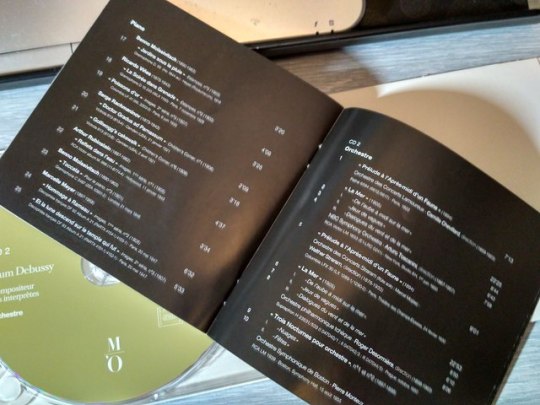
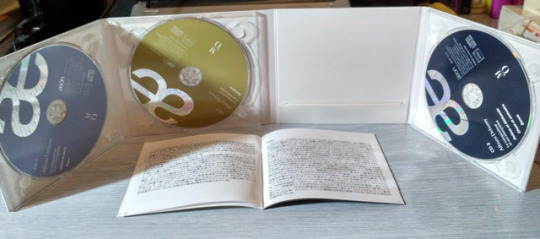

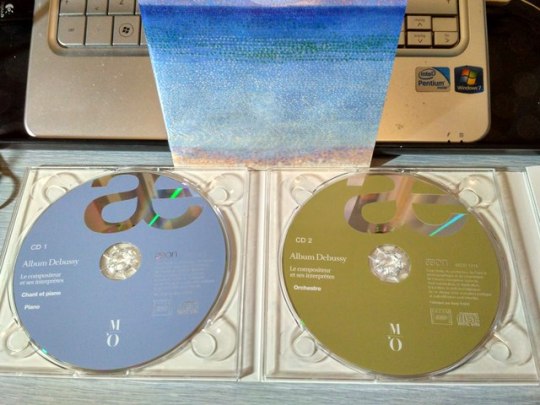

La música que suena yo no la oigo.
#claude debussy#mary garden#ninon valli#gustave cloëz#claire croiza#ivana meedintiano#george reeves#jane bathori#irène joachim#gérard souzay#jacqueline bopnneau#benno moïsevitsch#ricardo viñes#serge rachmáninov#arthur rubinstein#marcelle meyer#orchesdtre des concerts lamoureux#camille chevillard#nbc symphony orchestra#arturo toscanini#orchestre des concerts straram#walther straram#orchestra philharmonique tchéque#roger desormière#orchestre symphonique du boston#pierre monteux#hector dufrane#marthe nespoulous#armand narçon#georges truc
0 notes
Text
May 30 in Music History
1578 Birth of composer Valentin Dretzel.
1723 Debut of J. S. Bach as cantor at Leipzig's Thomasschule with his first cantata performance in Leipzig. The Cantata No. 75, Die Elenden sollen essen, presented at St. Nicolai Church. The next day was his official induction as Cantor.
1752 FP of Conforto's "Siroe" Madrid.
1776 FP of Jommelli's "Ifigenia in Tauride" Naples.
1790 FP of Paisello's "Zenobia in Palmira" Naples.
1792 Birth of French soprano Marie Sophie Ponchard in Paris.
1795 FP of Dittersdorf's "Gott Mars und der Haupmann von Bärenzahn" singspiel, Oels.
1797 Birth of composer Johann Christian Lobe.
1808 Birth of composer Joaquim Casimiro Jr.
1828 FP of Bellini's "Bianca e Gernando" Naples.
1831 FP of Donizetti's "Francesca di Foix" Opera semiseria, Naples.
1835 Birth of American composer Thomas Martin Towne in Coleraine, VT.
1844 Birth of composer Louis Varney.
1853 Birth of composer Karl Fritjof Valentin.
1860 Birth of Frontini: Francesco Paolo.
1862 Birth of English tenor Charles Courtice Pounds in London.
1865 FP of Faccio's "Amleto" Genoa.
1866 FP of Smetana's The Bartered Bride at the National Opera in Prague.
1871 Birth of Canadian tenor Harry Macdonough.
1883 Birth of English baritone, composer Francis Clive Savill Carey.
1883 Birth of Estonian-American composer and violinist Maurice Henry Goldblatt in Reval.
1893 Birth of Polish-American soprano Rosa Raisa in Bialystok.
1893 FP of Frontini's "Malia" Bologna.
1895 Birth of Hungarian violinist Yelly d'Aranyi in Budapest.
1901 FP of Standford´s "Much Ado about Nothing" London.
1909 Birth of American classical and jazz clarinetist and band leader Benjamin David Goodman aka Benny Goodman in Chicago.
1910 FP of Pierné's "On ne badine pas avec l'amour" Paris.
1912 Birth of Estonian composer and pianist Lydia Auster.
1920 Birth of American bass-baritone George London.
1923 Death of French composer Camille Chevillard in Chatou, aged 63.
1923 FP of Howard Hanson's Nordic Sym No 1, Hanson conducts, in Rome.
1924 FP of Petrauskas' "Egle, Queen of the Snakes" South Boston.
1925 Birth of composer Claude Prey.
1926 Birth of Belgian conductor Edouard Van Remoortel.
1927 FP of Stravinsky's opera-oratorio Oedipus Rex in ballet form. Composer conducts Ballet Russe, at the Sarah Bernhardt Theater in Paris.
1928 Birth of Dutch organist, harpsichordist, conductor, Gustav Leonhardt.
1928 Birth of Opera director Vincent Kelly in Chicago.
1932 Birth of American accordionist and composer Pauline Oliveros, in Houston, TX.
1932 Birth of composer Seppo Antero Yrjonpoika Nummi.
1936 Birth of bass-baritone Mark Vento in Ollioules.
1938 FP of Walter Piston's ballet The Incredible Flutist in Boston, MA.
1940 Birth of soprano and opera director Olivia Stapp.
1941 Birth of Italian soprano Rita Talarico in Rome.
1941 Death of Swedish baritone John Forsell.
1952 Birth of Hungarian pianist Zoltan Kocsis in Budapest.
1952 Death of French soprano Aline Vallandri.
1953 Birth of American composer and harpist Anne LeBaron.
1954 FP of Andre Jolivet´s Symphony No. 1 in Haifa.
1959 Birth of Turkish composer Mehmet Aktug in Istanbul, Turkey.
1962 FP of Benjamin Britten's oratorio War Requiem. Coventry Cathedral in England.
1969 Death of Belgian composer Gaston Brenta in Schaarbeek, Belgium.
1969 Death of tenor Carl Hartmann.
1970 Birth of American violinist Beth Ilana Schneider.
1971 Death of French composer and organist Marcel Dupré.
1989 Death of Croatian soprano Zinka Milanov.
1991 FP of Harrison Birtwistle's opera Gawain at the Royal Opera House, Elgar Howarth conducting, in London.
1998 FP of Melinda Wagner's Concerto for Flute, Strings and Percussion.
2001 Death of Russian composer Nicolai S. Korndorf in Vancouver, Canada
1 note
·
View note
Text
Noël
NOËL ENCHANTÉ DÉCOUVREZ LE PROGRAMME
Le Conservatoire de Musique et Danse d'Auxerre vous invite à retrouver l'esprit de Noël lors de ces concerts et spectacle de danse du "Noël enchanté" du 15 au 20 décembre en l’Église Saint-Eusèbe et au Silex.
Plus de renseignements : Conservatoire de Musique et Danse au 03 86 40 95 10.
Noël Enchanté 2019 du 15 au 20 Décembre
Cette année encore, à l'approche du solstice d'hiver, nous vous proposons de nous retrouver pour fêter l'esprit de Noël,
partager de beaux moments baignés de douceurs, d'un peu de magie et de merveilles : nous vous convions aux concerts du Noël enchanté ! Ce festival de chant, de musique et de danse se déroulera chaque soir du dimanche 15 au vendredi 20 décembre à l'église Saint-Eusèbe (ou au Silex le mercredi soir pour la danse).
La programmation restera riche et variée, avec des ensembles vocaux de l'Auxerrois ou du département, des orchestres...
Dimanche 15 décembre - 15h30 - Église St-Eusèbe
Ensemble de trombones Pentabone (dir. artistique Jean-Marc Kuntzel)
Gospel for ever (Perrigny – dir. Albert Buffon)
Chorales Andante et Chandalloues (dir. Françoise Pavec)
Lundi 16 décembre - 19h - Église St-Eusèbe
Chorale Fort Air (Courson-les-Carrières) et Clé de Fa'mes (ensemble vocal féminin de l'Auxerrois) (dir. Sarah Tetelbom)
Ensemble vocal d'Auxerre (dir. Pasquale Mourey)
Choeur Hélios
Mardi 17 décembre - 19h - Église St-Eusèbe
Choeurs du Conservatoire (Junior voix 2 et groupe Chants du monde) (dir. Philippe Allée et Stéphanie Ballet)
Choeur d'hommes de l'Auxerrois (dir. Philippe Allée)
Orchestre symphonique du conservatoire (dir. Gilbert Parrinello) et orchestre Junior Cordes (dir. Lucie Chevillard,
Hélène Couvert et Camille Janin)
Au programme, entre autres, de ce concert, des extraits du Gloria de Vivaldi
Mercredi 18 décembre - 20h - Le Silex (grande salle) - Réservation obligatoire
« Clara et le Casse-Noisette », spectacle de danse avec les classes du
conservatoire de Béatrice Habert, Philippe Vivenot et Benjamin Cortes
Jeudi 19 décembre - 19h - Église St-Eusèbe
Ensemble Ica Onna (dir. Jean-Christophe Hurtaud)
Harmonie d'Auxerre (dir. Françoise Moreau)
Vendredi 20 décembre - 19h - Église St-Eusèbe
Orchestre Junior vents du conservatoire (dir. Claude Lherminier)
Le Choeur Grégorien de la Cathédrale d’Auxerre (dir. Joël Haddad)
Orchestre d'Harmonie du conservatoire (dir. Jean-Marc Kuntzel)
Entrée gratuite, dans la limite des places disponibles. Un vin chaud sera offert en fin de concert (sauf le mercredi).
0 notes
Text
Les XX and Albéric Magnard (French, 1865-1914)
#LesXX and Albéric Magnard (French, 1865-1914)
Albéric Magnard (French, 1865-1914) - Symphony No.1 in C-minor, Op.4 (1889)
https://youtu.be/wKbT6Y4kvVk
Albéric Magnard (French, 1865-1914)
Lucien Denis Gabriel Albéric Magnard (French pronunciation: [lysjɑ̃ dəni ɡabʁijɛl albeʁik maɲaːʁ]; 9 June 1865 – 3 September 1914) was a French composer, sometimes referred to as the "French Bruckner"[according to whom?], though there are significant differences between the two composers. Magnard became a national hero in 1914 when he refused to surrender his property to German invaders and died defending it.
Biography[edit]
Magnard was born in Paris to François Magnard, a bestselling author and editor of Le Figaro. Albéric could have chosen to live the comfortable life his family's wealth afforded him, but he disliked being called "fils du Figaro" and decided to have a career in music based entirely on his talent and without any help from family connections.[1] After military service and graduating from law school, he entered the Paris Conservatoire, where he studied counterpoint with Théodore Dubois and went to the classes of Jules Massenet. There he met Vincent d'Indy, with whom he studied fugue and orchestration for four years, writing his first two Symphonies under d'Indy's tutelage. Magnard dedicated his Symphony No. 1 to d'Indy; and the two men always respected each other, despite their marked political differences (Magnard was pro-Dreyfus).
Magnard's house destroyed by the Germans, 1914.
François Magnard did what he could to support Albéric's career while trying to respect his son's wish to make it on his own. This included publicity in Le Figaro.With the death of his father in 1894, Albéric Magnard's grief was complicated by his simultaneous gratitude to and annoyance with his father.
In 1896, Magnard married Julie Creton, became a counterpoint tutor at the Schola Cantorum (recently founded by d'Indy) and wrote his Symphony No. 3 in B-flat minor.
Magnard published many of his own compositions at his own expense, from Opus 8 to Opus 20. Similar to the oeuvres of Paul Dukas and Henri Dutilleux, Magnard's musical output numbered only 22 works with opus numbers.
In 1914, at the beginning of World War I, Magnard sent his wife and two daughters to a safe hiding place while he stayed behind to guard the estate of "Manoir de Fontaines" at Baron, Oise. When German soldiers trespassed, he fired at them, killing one of them, and they fired back and set the house on fire. It is believed[citation needed] that Magnard died in the fire, but his body could not be identified in the remains. The fire destroyed Magnard's unpublished scores, such as the orchestral score of his early opera Yolande, the orchestral score of Guercoeur (the piano reduction had been published, and the orchestral score of the second act was extant) and a more recent song cycle.
Work[edit]
Guy Ropartz, who had led a concert performance in Nancy of the third act of Guercoeur in February, 1908, reconstructed from memory the orchestration of the acts that had been lost in the fire. The Paris Opéra gave the belated world premiere in 1931. (A complete recording of Guercœur was released by EMI Angel/Pathé Marconi in 1990. It features Hildegard Behrens, Nadine Denize, José van Dam, and Gary Lakes, with the Orchestre du Capitole de Toulouse conducted by Michel Plasson.)
Magnard's musical style is typical of contemporary French composers, but occasionally, as in the four completed symphonies, certain passages foreshadow the music of Gustav Mahler. His use of cyclic form and occasional incorporation of chorale earned him the nickname of "French Bruckner." Although Bruckner used cyclical forms long before d'Indy "trademarked" the concept to César Franck's name, Magnard's handling of cyclical form is more Franckian than Brucknerian. In his operas, Magnard used Richard Wagner's leitmotiv technique
Magnard's chamber works include a string quartet, a quintet for piano and winds, a piano trio, a violin sonata (in G, opus 13) and a cello sonata (in A, opus 20). A few more were published posthumously, including the Quatre poèmes en musique, four songs for baritone and piano.[2]
List of compositions[edit]
Trois pièces pour piano, Op. 1
Suite dans le style ancien, Op. 2, for orchestra
Six poèmes, Op. 3, for voice and piano
1. "À Elle"
2. "Invocation"
3. "Le Rhin allemand"
4. "Nocturne"
5. "Ad fontem"
6. "Au poète"
Symphony No. 1 in C minor (1890), Op. 4
Yolande, opera (1888–1891), Op. 5
Symphony No. 2 in E (1893), Op. 6
Promenades, Op. 7, for piano
Quintet for piano, flute, oboe, clarinet & bassoon in D minor, Op. 8
Chant funèbre (1895), Op. 9
Overture (1895), Op. 10
Symphony No. 3 in B-flat minor (1896), Op. 11
Guercoeur, opera (1897–1900), Op. 12
Sonata for Violin and Piano in G, Op. 13
Hymne à la justice (1903), Op. 14
Quatre poèmes, Op. 15, for baritone and piano
String Quartet in E minor, op. 16
Hymne a Venus, Op. 17
Trio for Piano and Strings in F minor, Op. 18
Bérénice, opera (1905–1909), Op. 19
Sonata for Cello in A, Op. 20
Symphony No. 4 in C-sharp minor (1913), Op. 21
Douze poèmes, Op. 22
En Dieu mon esperance
À Henriette
Discography[edit]
Albéric Magnard, "La musique de chambre," Timpani Records, France, 4 CDs (rel. Oct. 2014)
CD 1 Violin Sonata in G major, Cello Sonata in A major
CD 2 Piano Trio in F minor, Piano Quintet in D minor (for piano and wind instruments)
CD 3 String Quartet in E minor
CD 4 (spoken word) Discussion in French of work with music excerpts (Harry Halbreich, with Stéphane Topakian)
Liner notes in French and English.
https://en.wikipedia.org/wiki/Albéric_Magnard
LES XX
1893
Three concert evenings were organised. The first concert presented the first version of Paul Gilson's La Mer, Guillaume Lekeu's Andromèdeand music by Nikolai Rimsky-Korsakov, Alexander Glazunov, and Franz Servais.[23] The second showcased music by Alexis de Castillon, César Franck, Charles Bordes, Louis de Serres and Emmanuel Chabrier.[3] The final concert included the first performance of Vincent d'Indy's Suite in D and Ernest Chausson's Concert.[15] The other music played was composed by Gabriel Fauré, Charles Bordes, Camille Chevillard and Albéric Magnard.[3]
http://www.worldlibrary.in/articles/eng/Les_XX
Eugène Ysaÿe et la musique de chambre By Michel Stockhem, p. 101
https://books.google.co.kr/books?id=bFnkeYVJM6UC&pg=PA101&lpg=PA101&dq=Albéric+Magnard+les+XX&source=bl&ots=HXZp8fwA1T&sig=1-MFdLWWwCywFNJc8XSQXb5Tdl4&hl=en&sa=X&ved=0ahUKEwjt8I_53_fZAhWDULwKHUnWCX4Q6AEIazAO#v=onepage&q=Albéric%20Magnard%20les%20XX&f=false
JOURNAL ARTICLE
Lettres d'alberic magnard à Octave Maus
Albert Vander Linden and Albéric Magnard
Revue belge de Musicologie / Belgisch Tijdschrift voor Muziekwetenschap
Vol. 17, No. 1/4 (1963), pp. 93-120
Published by: Societe Belge de Musicologie
p. 93
https://www.jstor.org/stable/3686301?seq=1#page_scan_tab_contents
0 notes
Text
Die Pharmakokinetik bei konstanter oraler Baclofeneinnahme alkoholabhängiger erwachsener Patienten (Fundamental & Clinical Pharmacology, 2017)
Population pharmacokinetics of oral baclofen at steady-state in alcoholic-dependent adult patients (Fundamental & Clinical Pharmacology, 2017)
Autoren: Lucie Chevillard, Naomi Sabo, Michel Tod, Laurence Labat, Céline Chasport, Céline Chevaleyre, Florence Thibaut, Jérôme Barré, Julien Azuar, Franck Questel, Florence Vorspan, Vanessa Bloch, Frank Bellivier, Bernard Granger, Camille Barrault & Xavier Declèves
(pp, 06.11.2017)
Abstract im englischen Original
Baclofen has been proposed for few years to help treating alcohol-dependence at higher doses than those used in neurology. Baclofen pharmacokinetics has been previously well described at low oral or intravenous doses but remains poorly investigated with such high oral doses. We here describe dose regimens of baclofen in 143 alcohol-dependent-patients treated with steady-state oral doses of baclofen. Plasma baclofen levels were measured in blood samples using liquid chromatography coupled with tandem mass spectrometry. One-hundred and forty-nine baclofen concentrations were sampled 30 min to 15 h after the last dose and baclofen pharmacokinetics was determined using population pharmacokinetics approach. Our population, whose average age and BMI were 51.5 years and 25.5 kg/m2 , respectively, was composed of two thirds of men. Daily baclofen doses ranged from 15 to 250 mg and 26% were higher than 120 mg. A one-compartment model with first order absorption and elimination allowed to determine mean values for clearance (CL/F), volume of distribution (V/F), and absorption rate constant at 8.0 L/h, 44.5 L and 2.23 h-1 , respectively. Inter-individual variability on CL/F and V/F was 27.4 and 86% for the parameters. None of the demographic and biological covariates significantly decreased inter-individual variability. A proportional relationship between oral dose and plasma baclofen exposure indicated a linear pharmacokinetics of baclofen even at doses over 120 mg per day. Our large population study evidenced a linear pharmacokinetics of oral baclofen even at high daily doses with an inter-individual variability of baclofen exposure that could not be explained by demographic and biological data.
Link zum englischen Abstract
Volltext auf Anfrage
jQuery('#synved-social-grey-script-marker-3').siblings('a.synved-social-grey').mouseover(function () { try { Pixastic.revert(jQuery(this).find('.synved-social-image').get(0)); } catch (ex) { } }).mouseleave(function () { try { jQuery(this).find('.synved-social-image').pixastic("desaturate"); } catch (ex) { } }).find('.synved-social-image').one('load', function() { try { jQuery(this).pixastic("desaturate"); } catch (ex) { } }).each(function() { if(this.complete) jQuery(this).load(); });
jQuery('#synved-social-grey-script-marker-4').siblings('a.synved-social-grey').mouseover(function () { try { Pixastic.revert(jQuery(this).find('.synved-social-image').get(0)); } catch (ex) { } }).mouseleave(function () { try { jQuery(this).find('.synved-social-image').pixastic("desaturate"); } catch (ex) { } }).find('.synved-social-image').one('load', function() { try { jQuery(this).pixastic("desaturate"); } catch (ex) { } }).each(function() { if(this.complete) jQuery(this).load(); });
0 notes
Text

october, 15
1905
Claude Debussy's symphonic suite "La Mer" is premiered by the Lamoureux Orchestra under the baton of Camille Chevillard in Paris. The piece was initially not well received, but soon became one of the French composer's most admired and frequently performed orchestral works.
1 note
·
View note
Photo

october 15th, 1905
Claude Debussy's symphonic suite "La Mer" is premiered by the Lamoureux Orchestra under the baton of Camille Chevillard in Paris. The piece was initially not well received, but soon became one of the French composer's most admired and frequently performed orchestral works.
0 notes
Photo

October 15October 15th, 1905 Claude Debussy's symphonic suite "La Mer" is premiered by the Lamoureux Orchestra under the baton of Camille Chevillard in Paris. The piece was initially not well received, but soon became one of the French composer's most admired and frequently performed orchestral works.th, 1905
0 notes
Text
Paris Conservatoire and Charles Lamoureux (French, 1834–1899) and Marguerite and Camille Chevillard (French, 1859-1923) and Les XX Fernand Khnopff
Paris Conservatoire and Charles Lamoureux (French, 1834–1899) and Marguerite and Camille Chevillard (French, 1859-1923) and #LesXX Fernand #Khnopff
https://www.facebook.com/juhyung.han.5/posts/1730146193711214
http://blog.naver.com/artnouveau19/221229416020
Camille Chevillard (French, 1859-1923) - Theme & Variations in G Op.5 ~ Phonola recording C.1908
https://youtu.be/6quGdFYoRIE
Camille Chevillard (French, 1859-1923)
Paul Alexandre Camille Chevillard (14 October 1859 – 30 May 1923) was a French composer and conductor.
Biography[edit]
He was born in Paris, France. He led the Orchestre Lamoureux in the premieres of Claude Debussy's Nocturnes (1900 and 1901) and La mer (1905), and promoted the music of Albéric Magnard.[2] He was the son-in-law of conductor Charles Lamoureux- in 1888 he married Lamoureux's daughter Marguerite.[3] He died in Chatou.
His pupils included Suzanne Chaigneau, Clotilde Coulombe, Sophie Carmen Eckhardt-Gramatté, Yvonne Hubert, Eugeniusz Morawski, and Robert Soetens.
Selected works[edit]
Stage
La Rousalka, Incidental Music for the play by Édouard Schuré (1903)
Orchestral
Ballade symphonique, Op. 6 (1889)
Le chène et le roseau (The Oak and the Reed), Symphonic Poem after the fable by Jean de La Fontaine, Op. 7 (published 1900)
Fantaisie symphonique, Op. 10
Chamber music
Piano Quintet in E♭ minor, Op. 1 (1882)
Piano Trio, Op. 3 (1884)[4]
Quatre pièces (4 Pieces) for viola (or violin) and piano, Op. 4 (1887)
Sonata for violin and piano, Op. 8 (published 1894)
Quatre petites pièces (4 Little Pieces) for cello and piano, Op. 11 (1893)
Sonata in B♭ major for cello and piano, Op. 15 (1896)
String Quartet in D♭ major, Op. 16 (1897–98)
Allegro for horn and piano, Op. 18
Introduction et marche for viola and piano, Op. 22 (published 1905)
Piano
Thème et variations, Op. 5
Impromptu in D♭ major, Op. 14
Zacharie (d'apres Michel-Ange), Op. 19
Étude chromatique
Vocal
Attente for mezzo-soprano or baritone and piano, Op. 12
https://en.wikipedia.org/wiki/Camille_Chevillard
Paris Conservatoire and Charles Lamoureux (French, 1834–1899) and Marguerite and Camille Chevillard (French, 1859-1923) and Les XX
Charles Lamoureux (pronounced [ʃaʁl la.mu.ʁø]; 28 September 1834 – 21 December 1899) was a French conductor and violinist.
Life[edit]
He was born in Bordeaux, where his father owned a café. He studied the violin with Narcisse Girard at the Paris Conservatoire, taking a premier prix in 1854. He was subsequently engaged as a violinist at the Opéra and later joined the Société des Concerts du Conservatoire. In 1860, he was a co-founder of the Séances Populaires de Musique de Chambre and in 1872 he founded a quartet which eventually took on the proportions of a chamber orchestra.[1]
Having journeyed to England and assisted at a Handel festival, he thought he would attempt something similar in Paris. Having come into a fortune through marriage, he put on the performances himself, leading to the foundation of the Société Française de l'Harmonie Sacrée. In 1873, Lamoureux conducted the first performance in Paris of Handel's Messiah. He also gave performances of Bach's St Matthew Passion, Handel's Judas Maccabaeus, Gounod's Gallia, and Massenet's Eve. As funds ran out, Lamoureux took up posts at the Opéra-Comique (1876) and the Opéra (1877-79) which were short-lived, due to Lamoureux's tendency to quarrel over their productions.[1]
Lamoureux then drew up a contract with the Théâtre du Château d’Eau to give weekly symphony concerts. The Société des Nouveaux-Concerts (which became known as the Concerts Lamoureux) was directed by Lamoureux from 1881 until 1897, when he was succeeded by Camille Chevillard, his son-in-law. These concerts contributed greatly to popularizing Wagner's music in Paris.[1]
Charles Lamoureux conducting from the podium.
In fact Lamoureux's advocacy of Wagner's music was untiring. When he gave the first French performance of Wagner's Lohengrin at the Eden-Théâtre in 1887, the Chauvinists held street demonstrations outside denouncing the performance as an unpatriotic act. Despite this setback, two years later the work was restaged at the Opéra, which now made Lamoureux its musical director.[1]
In 1893 Lamoureux made a tour of Russia. He visited London on several occasions, and gave successful concerts with his orchestra at the Queen's Hall, on one occasion sharing the stage with Sir Henry Wood and Wood's own orchestra. Lamoureux died at Paris in December 1899; Tristan und Isolde had been at last heard in Paris, owing to his initiative and under his direction. After conducting one of the performances of this masterpiece he was taken ill and succumbed in a few days, having had the consolation before his death of witnessing the triumph of the cause he had so courageously championed.
https://en.wikipedia.org/wiki/Charles_Lamoureux
Camille Chevillard
Paul Alexandre Camille Chevillard (14 October 1859 – 30 May 1923) was a French composer and conductor.
Biography[edit]
He was born in Paris, France. He led the Orchestre Lamoureux in the premieres of Claude Debussy's Nocturnes (1900 and 1901) and La mer (1905), and promoted the music of Albéric Magnard.[2] He was the son-in-law of conductor Charles Lamoureux- in 1888 he married Lamoureux's daughter Marguerite.[3] He died in Chatou.
His pupils included Suzanne Chaigneau, Clotilde Coulombe, Sophie Carmen Eckhardt-Gramatté, Yvonne Hubert, Eugeniusz Morawski, and Robert Soetens.
https://en.wikipedia.org/wiki/Camille_Chevillard
Les XX and musicians
"Between 1888 and 1893, Vincent d’Indy worked with Octave Maus and a group of Belgian musicians, including the internationally famous violinist, Eugene Ysaye, to create a dynamic concert series of avant-garde music. Each year the principle French composers o f the day, including Gabriel Faurd, Ernest Chausson, Charles Bordes, Peter (pp.9-10) Benoit, Emanuel Chabrier, Cesar Franck, Julien Tiersot, Chevillard, and Paul Vidal, would travel from Paris to Brussels, to hear world-class performances o f their music and often perform their works to large and appreciative audiences o f the general public. The phenomena was exceptional and in essence paralleled the art exhibitions, which involved many ofthe principle Parisian artists from Van Gogh, to Seurat, Monet, Rodin, Gaugin, Pissaro, Lautrec and Redon, to name but a few."
“Les Vingt and the Belgian Avant-Garde"
A Discussion of the Music Staged Under the Auspices of Les Vingt; its Esthetic Relationship to Music, Art and Literature in Belgium and France, with reference to Le Societe Nationale de Musique, Paris.
Andrew Smith, University of Hartford, 2003, pp. 9-10
0 notes